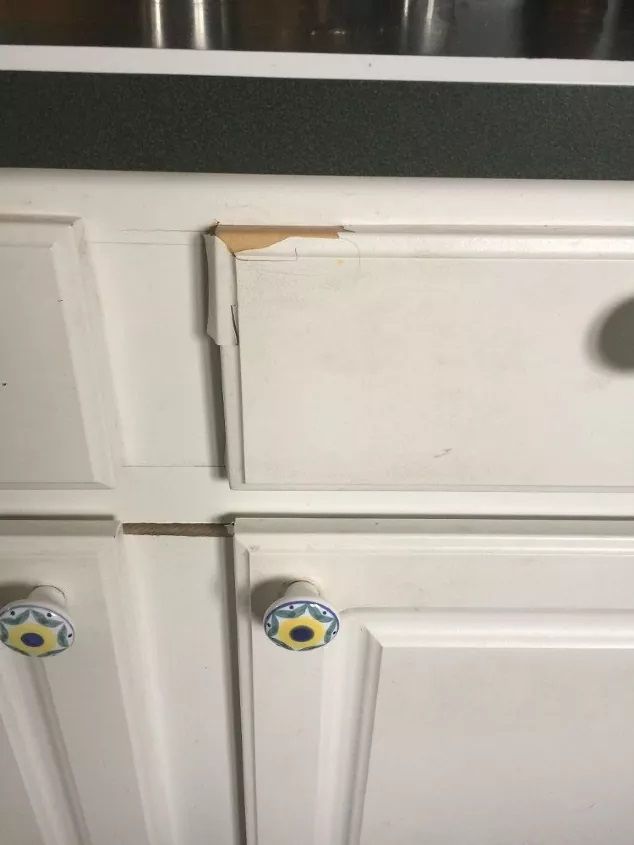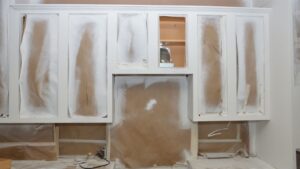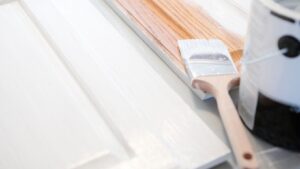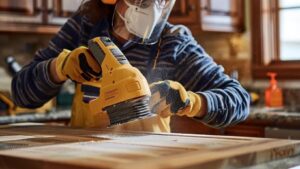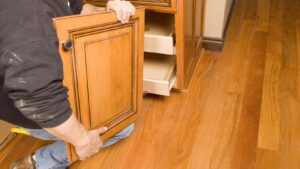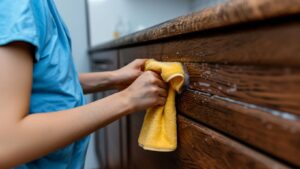At The Cabinet Painting Company, we see all kinds of cabinet finishes in all kinds of conditions. We know paint, stain, and lacquer quite well. For the most part, whether your cabinets are cherry, oak, maple, or any other hardwood, our process doesn’t change much as we work to restore life and beauty to your cabinets. However, there is a wildcard out there in cabinet finishes, and that product is called thermofoil.
If your home was built in the late 80s to early 2000s, there is a good chance that your cabinets are thermofoil. There are a few things you need to know about this finish – why it was used, what can happen to it, and what can be done if it’s failing.
Theromofoil is a thin, plastic covering that is applied to base cabinetry, usually constructed of medium-density fiberboard (MDF), leaving a near flawless finish from the moment of application. Because “thermo” means heat, you could probably imagine that the “foil”, meaning thin sheet. is applied by heating up the product so that it adheres and seals. The end result of this process is cabinetry that is uniformed, durable, and easy to care for for years. The other added benefit of thermofoil (and what made it so popular with builders) is that it is budget-friendly. Because the base cabinet isn’t a high end hardwood, the overall cost of the cabinets is controlled. Take an inexpensive cabinet and apply a thin plastic layer to make it look nice, and voila, a home builder’s dream. Usually white, but also available in other colors and imitation wood grain, thermofoil can be found in homes, condos, apartments, and hotels across the country.
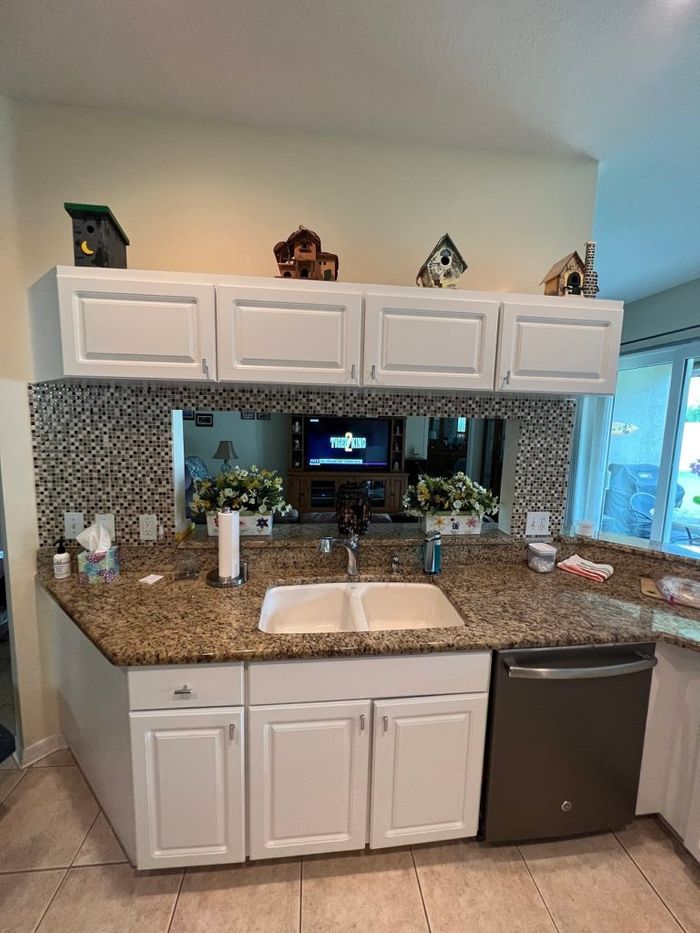
While thermofoil is relatively durable and easy to care for, it does have some serious disadvantages that can leave homeowners searching for help. The plastic sheeting and, more importantly, the glue that is used to affix it to the surface is vulnerable to excessive heat and moisture. That means in areas of the kitchen that tend to heat up – near an oven or coffee maker – or in bathrooms where steam occurs regularly, the termofoil will fail. Failing thermofoil peels, bubbles, and cracks. Once it fails, there really isn’t a way for thermofoil to be repaired. Homeowners are left with a just a few options – see if the damaged panel can be re-thermofoiled, replace the cabinets with a hardwood, or call us to have your cabinets painted.
We see failing thermofoil regularly, and our expert team of technicians is more than capable of turning these projects into beautiful, long-lasting cabinets that can make any homeowner forget all about the unsightly cracking and peeling. Our process resets everything by going back to where it all started – heat. We apply heat to remove all plastic sheeting and expose the base material. Then, we apply our multi-phase process to prepare, prime, and finish the surface in any color you can imagine. Whether you are wanting to simply restore your white cabinets to their original, pristine beauty or completely transform your space in a bold gray or blue, we can make it happen.
The best part is that our process will save you 60 percent or more off of replacing your cabinets or up to 50 percent off of cabinet refacing. Because we know saving money isn’t the only factor in your decision and peace of mind is important, we offer a 5 year warranty on our finish. If you have peeling thermofoil and have been looking for a solution, give us a call today and let us come out for a free, in-home consultation.
